#Canadian transportation and Logistics
Text

Reliable Transportation Company in Canada for All Your Logistics Needs
Looking for a trusted Transportation Company in Canada? SBS Expedited offers dependable logistics and transportation services across Canada and the USA, ensuring your goods reach their destination safely and on time. From LTL shipments to specialized freight solutions, we’ve got you covered. Visit SBS Expedited to explore our services today and get a quote for your next shipment!
https://www.sbsexpedited.com/
#canadian transportation and logistics#transportation company in canada#transportation services in canada
2 notes
·
View notes
Text
SBS Expedited: Your Premier Logistics Company in Canada

Discover seamless logistics solutions with SBS Expedited, a trusted logistics company in Canada. From efficient freight forwarding to reliable transportation services, we prioritize your shipments with speed and precision. Explore our comprehensive range of logistics solutions tailored to meet your business needs.
#Logistics Company in Canada#logistics#logistics company#transportation#transportation services in canada#canadian transportation and logistics
0 notes
Text
Discover how PL logistics companies optimize your supply chain with expert solutions. Learn how SBS Expedited enhances efficiency and streamlines operations to drive your business forward. Read more on our blog.
#Logistics Company in Canada#Transportation Services in Canada#Canadian transportation and Logistics
0 notes
Text
Logistics and Warehouse Automation Market by Application in Canada
As the demand for faster delivery and improved service levels escalates, logistics companies are embracing automation technologies to optimize their operations. This shift is not merely a trend but a fundamental change in how businesses manage their supply chains, warehouse processes, and overall logistics strategies.
The Driving Forces Behind Automation
Several factors contribute to the rapid adoption of warehouse automation in Canada. E-commerce growth, particularly accelerated by the COVID-19 pandemic, has intensified the need for logistics companies to enhance their operational capabilities. Customers now expect quick and accurate deliveries, putting pressure on logistics providers to streamline their processes. Also, labor shortages in the logistics sector have prompted companies to seek automated solutions to maintain productivity levels. The integration of automation technologies has become a strategic priority for many logistics firms.
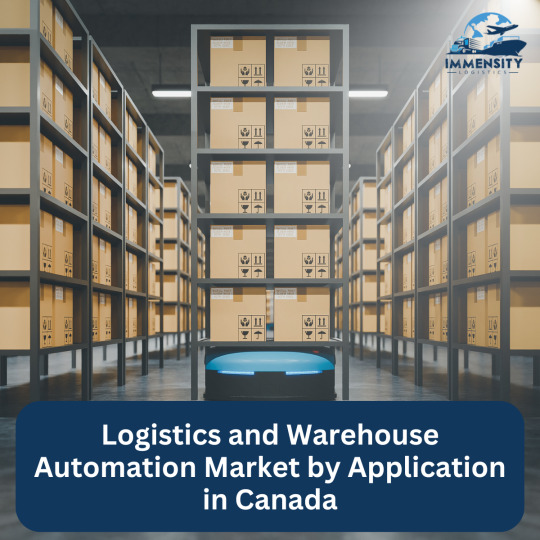
Applications in the Market
Inventory Management
Inventory management is one of the most critical applications of warehouse automation. The ability to maintain accurate inventory levels directly impacts operational efficiency and customer satisfaction. Automated inventory tracking systems, bolstered by technologies such as RFID (Radio Frequency Identification) and IoT (Internet of Things), allow logistics companies to monitor stock levels in real-time. These systems minimize human error, reduce excess inventory, and improve order accuracy. By adopting automated inventory management solutions, logistics companies can ensure that products are available when needed, enhancing service levels.
2. Order Fulfillment
Order fulfillment represents a pivotal area where warehouse automation can significantly boost logistics efficiency. Automated picking systems, including robotic picking solutions and automated guided vehicles (AGVs), enable logistics companies to speed up the order fulfillment process while maintaining accuracy. These technologies reduce the time taken from order placement to delivery, allowing companies to meet customer demands promptly. Furthermore, automation in order fulfillment minimizes the risk of errors, which can lead to costly returns and customer dissatisfaction.
3. Shipping and Receiving
Efficient shipping and receiving operations are essential components of successful logistics management. Automation technologies, such as dock scheduling systems and automated sorting solutions, optimize the flow of goods in and out of warehouses. These processes and logistics companies can significantly reduce delays and enhance overall efficiency. Systems ensure that shipments are processed swiftly and accurately, improving the time for delivery and benefiting customer experiences.
4. Warehouse Management Systems (WMS)
A robust Warehouse Management System (WMS) is crucial for managing warehouse operations effectively. A WMS offers logistics companies the tools to monitor and control inventory levels, manage labor resources, and analyze implementation metrics in real-time. By integrating automation into WMS, businesses can achieve greater visibility into their operations and improve decision-making processes. Advanced WMS solutions can facilitate seamless communication between departments, improving operational efficiency.
5. Data Analytics and Reporting
Analytics plays a vital role in optimizing logistics operations. Automated data collection and reporting tools enable logistics companies to track key performance indicators (KPIs) and analyze their operations comprehensively. With the insights gained from data analytics, logistics providers can identify bottlenecks, streamline processes, and make informed decisions. This level of visibility not only aids in optimizing current operations but also assists in strategic planning for future growth.
Challenges and Considerations
While the benefits of warehouse automation are substantial, logistics companies must also navigate challenges associated with implementation. Initial investment costs can be significant, and companies must carefully assess their return on investment (ROI) before committing to automation technologies. Also, the new systems with existing processes can be complex, requiring thorough planning and training for staff. Change management is crucial to ensure employees adapt to new technologies and workflows.
The Future of Logistics Automation in Canada
As the logistics sector in Canada continues to evolve, the integration of automation technologies will only become more critical. Companies that invest in advanced logistics solutions will adapt to changing market demands and improve their competitive edge. The rise of technologies such as artificial intelligence, machine learning, and robotics will further enhance the capabilities of logistics companies, paving the way for more innovative and efficient operations.
By embracing automation across various applications, businesses can achieve greater efficiency, reduce costs, and deliver superior. The shift towards automated logistics solutions is not just a trend; it’s a necessary evolution in the fast-paced world of supply chain management. As Canadian logistics firms adapt to this changing landscape, the future looks promising, marked by innovation and enhanced efficiency.
#Logistics Automation#immensity logistics#logistics management#freight logistics#supply chain management#transportation#logistics industry#automation#integration#Canadian Logistics#Warehouse Management
0 notes
Text
Labor disruption coming for supply chains
Now is the time for labor unions to press ports and railways for new benefits for workers. There is a perfect storm of labor stoppages about to take place.
Thursday (that’s two days from this writing) the Teamsters Canada union (TCRC) expects to strike the CPKC railroad, one of the two largest in Canada. CPKC is also a large US and Mexico railway, and we’ve yet to see if US unions will honor a…
#Canadian National lockout#CPKC railway strike#Freight embargoes#International Longshoremen&039;s Association strike#Labor stoppages 2024#labor unions#Logistics#Panama Canal drought impact#Port of Vancouver congestion#Port strikes 2024#Railway labor disputes#Railway worker benefits#Supply Chain Disruptions#supply chains#Teamsters Canada strike#Transport logistics#US East Coast port negotiations
0 notes
Text
Shipping companies in ontario canada - Canadian freight quote
Explore reliable shipping companies in Ontario, Canada for seamless freight solutions. Get competitive Canadian freight quotes for efficient transportation of goods. Services include domestic and international shipping, freight forwarding, and logistics management. Connect with trusted carriers for cost-effective and timely deliveries.
For More Info : https://canadianfreightquote.com/ontario/
Email Id : [email protected]
Call Direct to Rick 780-970-7337
Call To Operations Centre 780-733-7525
Canadian Freight Quote / Complete Shipping Solutions: 12757 149th Street, Edmonton, AB, T5L 4M9
0 notes
Text
#transport global logistics canada#ocean freight company#ocean freight forwarder#container transloading#shipment tracking services#shipping container trucking#container freight trucking#overland container transportation services#overland services#canadian freight services
0 notes
Text
Why the next pandemic could come from the Arctic — and what to do about it - Published Sept 4, 2024
By: Christian Sonne
Only a unified approach across disciplines can reduce the underappreciated threat of emerging diseases arising in the north.
The Arctic is under stress, that much is known. Between 1979 and 2021, the region warmed four times faster than the global average, with effects — as yet poorly understood — on its ecology and ability to store carbon, on global sea levels and on wider ocean-circulation and weather patterns.
Add in the effects of biodiversity loss and pollution, and people often refer to a triple planetary crisis. I think we should actually be talking about a quadruple crisis. Since starting research in the Arctic in 1997, I have spent nearly all of my summers there, monitoring changes in pollution levels, habitats and food webs using a ‘One Health’ approach that integrates effects on wildlife, humans and ecosystems. And it’s becoming clear that, as the Arctic warms, its environment degrades and human activities increase, new health threats are emerging. In particular, the Arctic is likely to become a hotbed for zoonotic diseases that spill over into humans from other animals. That threat was brought home to all of us by the COVID-19 pandemic. We need to take seriously the possibility that the next pandemic could come from the north.
Some 60% of emerging infectious diseases are zoonotic. Their emergence and spillover is in general highly interlinked with habitat degradation, biodiversity loss and food-web changes — all of which are present in the Arctic. But a warming Arctic harbours other risks. As sea ice thaws, ‘forever chemicals’ are increasingly being transported into Arctic environments. These include mercury, per- and polyfluoroalkyl substances and polychlorinated biphenyls, all known to modulate human and animal immune systems and increase vulnerability to respiratory infections. Invasive fish and whale species are also bringing in industrial chemicals and their own diseases.
The pathogens enter an environment in which some native species, such as polar bears (Ursus maritimus), have not been exposed to them, and so are at increased risk. The release of ancient microorganisms long frozen in ice and sediments as the landscape thaws adds to this danger: humans and other wildlife are likely to lack any immune defences against them.
These risk factors are set to increase. The first ice-free Arctic summers could come as early as the 2030s. The Arctic Ocean has huge potential for energy, fishery and tourism sectors, and is not subject to any global treaty regulating its exploitation. Further wildlife disturbance, pollution, overfishing and jurisdictional conflicts are the likely result.
The current perception is that the Arctic possesses relatively low microbial activity. Compared with temperate and tropical latitudes, many fewer resources are devoted to studying zoonoses in the Arctic, with sparse surveillance for emerging threats in most areas. This needs to change — taking account of human, animal and wider environmental perspectives.
When it comes to logistics, low-tech is high-tech in the Arctic. On the human side, Canadian researchers have already started taking samples from sewage and other sources that can easily be analysed for the presence of viral pathogens. This kind of approach should be combined with better access to community health care, clinical inspections and consultations with local doctors. A particular flash point is the handling and consumption of raw or dried animal meat in subsistence-hunting communities. Hygiene courses, meat inspection and better disease surveillance developed in partnership with those communities can help to both sustain food security and prevent spillover events.
On the wildlife side, long-term finance is needed for yearly and seasonal surveillance programmes. These schemes should collaborate with local communities using existing techniques that don’t rely on technologies such as cryogenics and so are easy to use in situ. Such activities could be embedded into the ongoing Arctic Council monitoring and assessment programmes on pollution, biodiversity and climate change, as laid out in the council’s ‘One Arctic, One Health’ project.
On the broader environmental front, efforts to reduce pollution, safeguard biodiversity and reduce greenhouse-gas emissions through international agreements play their part. Efforts spearheaded by various Arctic Council working groups, and other initiatives such as the ongoing negotiations for a United Nations-backed treaty on plastic pollution, show how intergovernmental and interdisciplinary collaboration across public health, biodiversity conservation, pollution and food security can help with achieving sustainability.
To make a true difference, there is need for a broader Arctic monitoring and assessment plan, underpinned by treaty, that combines surveillance of pollution and of disease. This is currently difficult to achieve through the Arctic Council, given the absence of Russia and Russian data since the country’s invasion of Ukraine in 2022. A better opportunity to establish a holistic understanding and action plan might be afforded by the proposed pandemic-preparedness treaty, currently under negotiation at the World Health Organization. This could build on the efforts of almost 200 globally recognized One Health Networks, including those in the Arctic.
Action must be taken now. If it isn’t, it will become more difficult to mitigate wildlife interactions and diagnose, treat and isolate people with an infection — and the risk of a future pandemic with an Arctic ground zero will only increase.
Nature 633, 10 (2024)
doi: doi.org/10.1038/d41586-024-02830-7
6 notes
·
View notes
Text










Prince's Island Park, Calgary (No. 3)
Calgary's economy includes activity in the energy, financial services, film and television, transportation, and logistics, technology, manufacturing, aerospace, health and wellness, retail, and tourism sectors. The Calgary Metropolitan Region is home to Canada's second-largest number of corporate head offices among the country's 800 largest corporations. In 2015, Calgary had the largest number of millionaires per capita of any major Canadian city. In 2022, Calgary was ranked alongside Zürich as the third most livable city in the world, ranking first in Canada and in North America. In 1988, it became the first Canadian city to host the Olympic Winter Games.
Calgary was named after Calgary Castle (in Scottish Gaelic, Caisteal Chalgairidh) on the Isle of Mull in Scotland. Colonel James Macleod, the Commissioner of the North-West Mounted Police, had been a frequent summer guest there. In 1876, shortly after returning to Canada, he suggested its name for what became Fort Calgary. The Scottish Gaelic placename Calgairidh, in turn, possibly originates from a compound of kald and gart, Old Norse words, meaning "cold" and "garden". If so, the placename is likely a relic of Norse settler-colonists who occupied the Inner Hebrides in the medieval period. A competing etymology cites the Gaeliccala[dh] gàrraidh, which means "enclosed meadow (or pasture) harbour", or, alternatively, cala[dh]-gheàrraidh, meaning "harbour pasture". The first of these two possibilities, arguably translatable as "meadow harbour", has some relevance to local geography: the town of Calgary, such as it is, has a large meadow to its east, and this meadow leads to Calgary beach.
Source: Wikipedia
#Prince's Island Park#Bow River#Calgary#Alberta#Canada#summer 2024#travel#original photography#vacation#tourist attraction#landmark#cityscape#architecture#landscape#nature#urban park#beaver dam#skyline#the Bow#engineering#Chevron Learning Pathway#Downtown Mirror Pond#Centre Street Bridge
3 notes
·
View notes
Text
Financial Economics
By. Jacinda Thomas, Masters of Science in Wealth Management
Good Morning,
One of the first things I had to learn as a world class wealth manager was financial economics. Let's dive right in.
First we will break down the meaning of each individual word.
Financial: the study of finance; let's define finance: money or other liquid resources of a government, business, group, or individual
Economics: a social science concerned chiefly with description and analysis of the production, distribution, and consumption of goods and services
There were also other definitions as well.
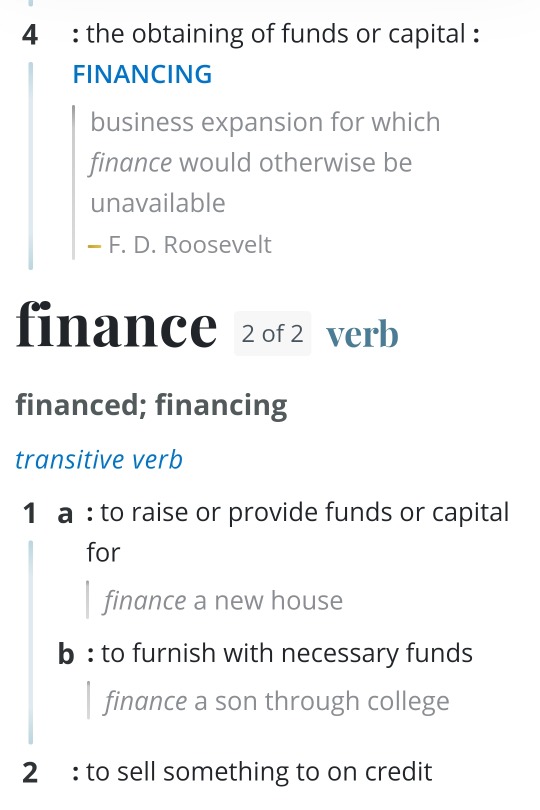
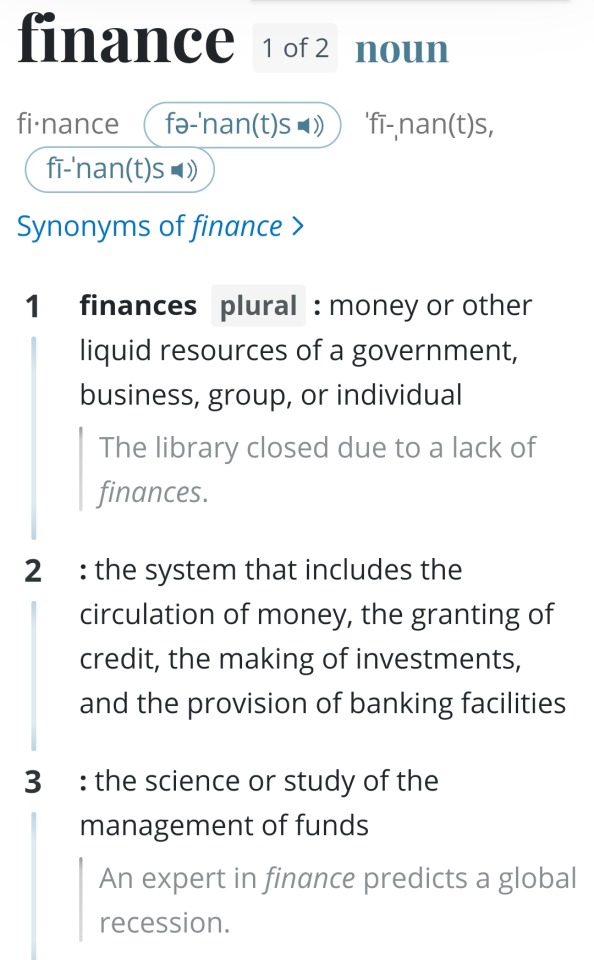

Now let's think about it: the economy is the revolving circulation of goods or services. And finance is simply money... so it's safe to say that financial economics is money of the circulation of goods and services.
This makes sense. As an ultra high net worth wealth manager, it's important to have a clear understanding of the circulatory money activity of goods and services.
This is one of the things that makes me such a great ultra high net worth wealth manager and advisor. As a person from a family of entrepreneurs I took a keen interest in how business is run from a very, very early age. As mentioned in my opening essay, throughout the last 16 years I've super deep dived into industries of all sorts: autos, mechanics, cars, fashion, retail, style grooming, software engineering, web development, apps, servers, computers, design, restaurants, food, logistics, warehousing, transportation, logistics, shipping/receiving, farming, agriculture, agtech, vertical farming, energy, wind, oil, pellet, real estate, construction, interior design, development, commercial, industrial, residential, art, music, touring, music production, education, teaching, higher learning, politics, government, religion, philanthropy, non-profit, finance products. With the latest being crypto, blockchain, and web3... I'm sure there are a few things I didn't mention, but overall these are few of the fields that I've had genuine authentic non-manufactured interest in. Which is key, genuine interest is rare.
Extremely thoroughbred in regards to understanding how the world works. Which will make me one of the most valuable and highly sought after high net worth wealth managers in the world.
Even the pastors need a pastor.
I understand the economy, the intricacies of how it interacts. And I'm continuously learning in natural ways.

We're never in a hurry, it's important that the table is set properly.
Okay so now let's dive deeper into financial economics.
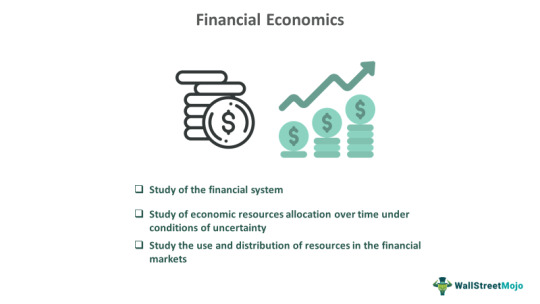
Our overall assumption just from defining the words is in the ballpark of this definition. The study of the financial system. The study of economic resources allocation over time under conditions of uncertainty. Yes this makes sense. The study of the use and distribution of resources in the financial markets.
Within a semester class we will learn much more to be able to adequately assist our clients and/or firms.
The Canadian lecture on financial economics adds a nice global perspective to our understanding.
The Financial Appetite blog does a lovely job of explaining this. Learn more here: https://www.thefinancialappetite.com/blog/what-is-financial-economics

What Is Financial Economics?
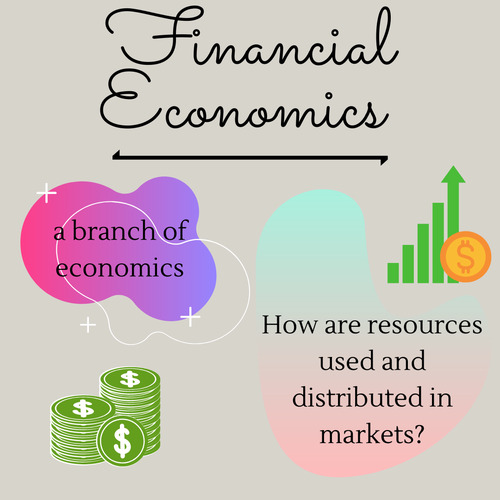
Financial economics is a branch of economics that analyzes how resources are used and distributed in markets. In general, it is the study of choices consumers, business managers, and government officials make to achieve their goals considering that they have limited or scarce resources. Financial decisions will frequently have to take into consideration future events, which can be related to individual stocks, portfolios, or the market as a whole. Financial economics differs from the other branches of economics because it pays particular attention to monetary activities. This branch of economics analyzes how inflation, depression, deflation, recession, prices, and other financial variables impact one another. It applies economic principles to financial markets, corporations, banks, and central banking policies, and uses economic theory to evaluate how time, risk, opportunity costs, and information can produce incentives for a particular decision. Financial economics plays an important role in making investment decisions, identifying risks, and valuing securities and assets.
What a wonderful break down. Let's see what Investopedia has to say.
Financial Economics
What Is Financial Economics?
Financial economics is a branch of economics that analyzes the use and distribution of resources in markets. Financial decisions must often take into account future events, whether those be related to individual stocks, portfolios, or the market as a whole.
KEY TAKEAWAYS
Financial economics analyzes the use and distribution of resources in markets.
It employs economic theory to evaluate how time, risk, opportunity costs, and information can create incentives or disincentives for a particular decision.
Financial economics often involves the creation of sophisticated models to test the variables affecting a particular decision.
How Financial Economics Works
Making financial decisions is not always a straightforward process. Time, risk (uncertainty), opportunity costs, and information can create incentives or disincentives. Financial economics employs economic theory to evaluate how certain things impact decision making, providing investors with the instruments to make the right calls.
Financial economics usually involves the creation of sophisticated models to test the variables affecting a particular decision. Often, these models assume that individuals or institutions making decisions act rationally, though this is not necessarily the case. The irrational behavior of parties has to be taken into account in financial economics as a potential risk factor.

Investopedia compares it to traditional economics.
Financial Economics vs. Traditional Economics
Traditional economics focuses on exchanges in which money is one—but only one—of the items traded. In contrast, financial economics concentrates on exchanges in which money of one type or another is likely to appear on both sides of a trade.
The financial economist can be distinguished from traditional economists by their focus on monetary activities in which time, uncertainty, options and information play roles.
Financial Economics Methods
There are many angles to the concept of financial economics. Two of the most prominent are:
Discounting
Decision making over time recognizes the fact that the value of $1 in 10 years' time is less than the value of $1 now. Therefore, the $1 at 10 years must be discounted to allow for risk, inflation, and the simple fact that it is in the future. Failure to discount appropriately can lead to problems, such as underfunded pension schemes.
Risk Management and Diversification
Advertisements for stock market-based financial products must remind potential buyers that the value of investments may fall as well as rise.
Financial institutions are always looking for ways of insuring, or hedging, this risk. It is sometimes possible to hold two highly risky assets but for the overall risk to be low: if share A only performs badly when share B performs well (and vice versa) then the two shares perform a perfect hedge.
An important part of finance is working out the total risk of a portfolio of risky assets, since the total risk may be less than the risk of the individual components.
Let's look at one more source to understand Financial Economics. This time we will view a video:
youtube
Take the day to review the materials above. And welcome to Financial Economics.
Jacinda T.Thomas
#jacindathomas #financialeconomics #wealthmanagement
4 notes
·
View notes
Text
Truck Companies in Calgary: A Comprehensive Guide
Calgary, known for its vibrant economy and proximity to the Rocky Mountains, is a hub for various industries that rely heavily on logistics and transportation services. Truck Companies in Calgary If you are looking to move goods or need freight shipping services, Calgary is home to several reputable truck companies that cater to diverse shipping needs.
Why Choose Calgary for Trucking Services?
Calgary’s strategic location makes it an ideal starting point for trucking services in Western Canada. With major highways like the Trans-Canada Highway and the Queen Elizabeth II Highway, truck companies in Calgary can efficiently serve clients not just in Alberta but across Canada and into the United States. The city’s robust infrastructure supports quick loading and unloading, making it a favorite for businesses that need reliable transportation.
Key Trucking Services Offered
Freight Shipping: Many trucking companies in Calgary specialize in freight shipping, offering competitive rates and reliable delivery timelines. They cater to various industries, including retail, construction, and agriculture.
LTL and FTL Services: Less-than-truckload (LTL) and full truckload (FTL) services are available to meet the specific needs of businesses. Whether you have a small shipment or a full truck, companies can accommodate your requirements.
Temperature-Controlled Shipping: For businesses dealing in perishable goods, temperature-controlled trucking services ensure that products are kept at the required temperatures during transit.
Logistics Management: Many truck companies also provide logistics management services, helping businesses streamline their shipping processes and reduce costs.
Finding the Right Truck Company
When searching for a truck company in Calgary, consider the following factors:
Reputation: Look for companies with positive customer reviews and a track record of reliability.
Service Range: Choose a company that offers a comprehensive range of services tailored to your needs.
Technology: Modern trucking companies use advanced tracking and logistics software, allowing you to monitor your shipments in real-time.
Insurance and Licensing: Ensure that the trucking company is fully insured and licensed to operate in your area.
Featured Truck Company in Calgary
One of the standout options for trucking services in Calgary is Canadian Freight Quote. They offer competitive freight quotes, reliable shipping services, and a commitment to customer satisfaction. Whether you are a small business or a large enterprise, Canadian Freight Quote can assist you with your transportation needs, providing you with tailored solutions that meet your budget and timeline.
Conclusion
Choosing the right trucking company in Calgary can significantly impact your business's efficiency and bottom line. With a wide range of services and a commitment to reliability, Calgary's truck companies are well-equipped to meet your transportation needs. Truck Companies in Calgary For those looking for a trusted partner, Canadian Freight Quote is an excellent choice for ensuring your goods reach their destination safely and on time.
0 notes
Text

Reliable Transportation Company in Canada for All Your Shipping Needs
Looking for a trusted Transportation Company in Canada? SBS Expedited offers fast, efficient, and reliable shipping solutions across the country. Whether it's local or cross-border transport, our team ensures your goods reach their destination on time and in perfect condition.
Contact SBS Expedited today to get a quote and experience seamless transportation with us.
https://www.sbsexpedited.com/
#transportation company in canada#transportation services in canada#canadian transportation and logistics
0 notes
Text
Transportation Services in Canada | SBS Expedited

Explore SBS Expedited's premier Transportation Services in Canada. Our reliable solutions ensure swift and secure delivery for all your cargo needs. Connect with us for efficient logistics solutions today!
#Transportation Services in Canada#Transportation#Logistics#logistics company in brampton#canadian transportation and logistics
0 notes
Text
Optimizing Supply Chain Logistics: Key Services for Enhanced Operational Efficiency
In today's competitive business environment, a well-managed supply chain is essential for success. From FBA deliveries to customs clearance, mastering and optimizing logistics services can greatly boost operational efficiency. This guide provides an in-depth look at critical supply chain services, including e-commerce order fulfillment, label replacement, and more, offering strategies to streamline processes and enhance overall performance.
FBA Delivery: Enhancing Your E-Commerce Fulfillment
Fulfillment by Amazon (FBA) provides a robust solution for e-commerce businesses aiming to streamline their order fulfillment processes. By tapping into Amazon’s vast distribution network, businesses can ensure swift and dependable product delivery to customers. FBA simplifies inventory management while offering access to Amazon’s customer service and returns handling, enabling you to focus on expanding your business.
E-Commerce Order Fulfillment: Meeting Customer Expectations
E-commerce order fulfillment encompasses the end-to-end process of receiving, processing, and shipping online orders to customers. Efficient fulfillment relies on a seamless approach to inventory management, order packing, and timely shipping. By implementing effective fulfillment strategies, businesses can ensure on-time delivery, boosting customer satisfaction and fostering repeat purchases.
Label Replacement: Ensuring Accurate Product Information
Label replacement plays a crucial role in maintaining accurate product information throughout the supply chain. Whether addressing damaged labels, incorrect details, or regulatory updates, timely label replacement helps avoid shipping errors and compliance risks. Establishing an efficient label replacement process ensures that products meet labeling standards and are delivered to customers in optimal condition.
Last Mile Delivery: The Final Touch in Customer Experience
Last mile delivery is the final stage of the shipping process, where goods are transported from a distribution hub to the customer’s doorstep. This step is critical for customer satisfaction, as it directly influences delivery speed and service quality. Optimizing last mile delivery involves selecting efficient routes, leveraging real-time tracking technology, and ensuring top-notch customer service.
Warehousing Services: Efficient Storage Solutions
Warehousing services are essential for managing inventory and ensuring products are readily available for order fulfillment. Effective solutions include strategically located facilities, advanced inventory management systems, and streamlined handling processes. By utilizing comprehensive warehousing services, businesses can enhance inventory control and minimize storage costs.
Destuffing & Forwarding: Streamlining Cargo Handling
Destuffing and forwarding are key components of managing international shipments. Destuffing refers to unloading cargo from containers, while forwarding involves coordinating transportation to the final destination. Streamlined destuffing and forwarding processes ensure efficient cargo handling, minimize delays, and optimize overall supply chain operations.
3PL Order Fulfillment: Leveraging Third-Party Logistics
Third-Party Logistics (3PL) order fulfillment enables businesses to outsource their logistics operations to specialized providers. These 3PL partners handle warehousing, inventory management, and order processing, allowing companies to concentrate on their core activities. Collaborating with a dependable 3PL provider can boost efficiency, lower costs, and enhance scalability.
Canadian Customs Clearance: Navigating Import Regulations
Canadian customs clearance is a vital process for businesses importing goods into Canada. This involves submitting the required documentation, paying applicable duties, and ensuring compliance with Canadian import regulations. A thorough understanding of the intricacies of Canadian customs clearance helps prevent delays and facilitates the smooth entry of goods into the Canadian market.
Customs Clearance: A Global Perspective
Customs clearance is the process of navigating customs barriers in different countries. It entails preparing and submitting necessary documentation, paying applicable duties, and adhering to local regulations. Effective customs clearance is crucial for minimizing delays and preventing additional costs in international shipping.
0 notes
Text
Navigating The Process: Step-By-Step Tips For Importing Vehicles From America To Canada
Are you dreaming of cruising the Canadian highways in a sleek American vehicle? Importing a car from the USA to Canada can be an exciting venture, but it comes with challenges. Initially, the process may seem daunting, filled with regulations and paperwork that can overwhelm anyone. However, you can navigate this journey smoothly and turn your dream into reality with guidance and knowledge.
Whether you're eyeing a classic muscle car or a modern SUV, importing a vehicle involves more than just hopping across the border. It requires understanding customs rules, safety standards, and even emissions requirements specific to Canada. But don't worry; we're here to break it all down for you step by step.
Get ready to hit the road as we explore everything you need to know about importing vehicles from America to Canada! Import Car From Usa To Canada
Understanding the Regulations and Requirements
Understanding regulations is crucial when you decide to import a car from the USA to Canada. The first step is knowing that vehicles must comply with Canadian safety standards, which often involve modifications for emissions and features.
You'll also need to gather documentation. Essential paperwork includes the vehicle title, bill of sale, and any recall clearance letters. These documents prove ownership and ensure no outstanding issues with the vehicle.
Customs duties can also apply. When crossing the border, be prepared for taxes based on the value of your new ride.
Additionally, check if your car meets Transport Canada's requirements by referencing their Vehicle Importation Regulations guide online. Knowledge of these factors will help streamline your importing journey significantly—making it as smooth as possible from start to finish without unwanted surprises.
Common Challenges and How to Overcome Them
Importing a vehicle from the USA to Canada can present several challenges. One common hurdle is navigating complex documentation. Ensuring you have the correct paperwork, such as title and bill of sale, is crucial.
Another issue often arises with compliance standards. Cars must meet Canadian safety and emission regulations. Researching these requirements beforehand helps avoid last-minute surprises.
Customs duties can also be daunting. Understanding how much you'll need to pay at customs will help you budget effectively. Keeping all receipts organized makes this process smoother.
Language barriers might complicate communications if you're importing from regions where English isn't the primary language. Consider using translation services for essential documents or conversations.
Time management is vital when coordinating inspections and transport logistics. Creating a timeline will keep everything on track and reduce stress throughout your import journey.
Additional Tips for a Smooth Importing Process
Before you start the import process, ensure you have all the necessary documents ready. This includes the bill of sale, title, and previous registration papers. A well-organized file can save time.
Consider using a reputable customs broker. They are experts in navigating complex regulations and can help you avoid pitfalls.
Keep communication lines open with both American and Canadian authorities. If something seems unclear, don't hesitate to ask questions.
Make sure your vehicle meets Canadian safety standards before importing it. This will prevent issues during inspection upon arrival.
When budgeting for your purchase, plan for additional costs such as taxes and duties. Unexpected expenses can arise, so it's best to be prepared.
Once your car arrives in Canada, familiarize yourself with local licensing requirements to ensure a seamless transition onto the roads.
Conclusion
Importing a vehicle from the USA to Canada can be an exciting journey, but it requires careful planning and an understanding of regulations. From research to paperwork, each step plays a crucial role in ensuring a smooth experience.
By familiarizing yourself with the requirements and overcoming potential challenges, you set yourself up for success. Be proactive—gather all essential documents ahead of time and stay informed about customs procedures.
Remember that patience is vital throughout this process. You can navigate the complexities of importing your vehicle with thorough preparation and attention to detail. Embrace the adventure ahead—you're bringing home a car and adding value to your driving experience in Canada!

0 notes
Text
Elevate Your Business with Top-Notch Supply Chain Services in Canada
In the fast-paced world of commerce, efficient supply chain management is crucial for ensuring that products reach customers quickly and reliably. Whether you're an e-commerce business, a manufacturer, or a retailer, our supply chain services in Canada can help streamline your operations and boost your bottom line. Discover how our comprehensive services, including FBA delivery, e-commerce order fulfillment, and Canadian customs clearance, can support your business growth.
Comprehensive Supply Chain Services
**1. FBA Delivery**
Fulfillment by Amazon (FBA) is a service that allows businesses to store products in Amazon’s fulfillment centers, where Amazon takes care of storage, packaging, and shipping. Our FBA delivery service ensures that your inventory is always ready for quick dispatch, helping you maintain high customer satisfaction and positive seller ratings.
**2. E-commerce Order Fulfillment**
Efficient e-commerce order fulfillment is essential for maintaining a competitive edge. We handle the entire fulfillment process, from receiving and storing inventory to picking, packing, and shipping orders. Our streamlined operations ensure quick and accurate delivery, enhancing your customer experience and boosting repeat business.
**3. Label Replacement**
Accurate and compliant labeling is vital for meeting regulatory requirements and providing clear information to customers. Our label replacement service ensures that all products are correctly labeled, reducing the risk of returns and compliance issues. We manage the entire process, from design to application, ensuring consistency and accuracy.
**4. Last Mile Delivery**
The final step in the delivery process, known as last mile delivery, is critical for customer satisfaction. Our last mile delivery service ensures that products are delivered to customers promptly and in perfect condition. We offer flexible delivery options to meet varying customer needs, providing a seamless delivery experience.
**5. Warehousing Services**
Effective warehousing is the backbone of a well-organized supply chain. Our warehousing services provide secure, climate-controlled storage solutions for a wide range of products. With advanced inventory management systems, we help you maintain optimal stock levels, forecast demand, and reduce storage costs.
**6. Destuffing & Forwarding**
Destuffing and forwarding are essential for businesses dealing with large shipments. Our professional team ensures that goods are carefully unloaded from containers and forwarded to their next destination efficiently. We handle all logistics, including documentation and transportation, ensuring smooth and timely delivery.
**7. 3PL Order Fulfillment**
Third-Party Logistics (3PL) providers offer comprehensive logistics solutions to support business growth. Our 3PL services include warehousing, transportation, and order fulfillment, providing a flexible and scalable solution for your logistics needs. Partnering with us allows you to focus on your core business while we manage your supply chain.
**8. Canadian Customs Clearance**
Navigating Canadian customs clearance can be complex and time-consuming. Our customs clearance services ensure that your goods comply with all Canadian regulations, minimizing delays and avoiding penalties. We handle all necessary documentation and communication with customs authorities, ensuring a smooth clearance process.
Enhancing your supply chain operations is key to staying competitive in today's market. Our comprehensive supply chain services in Canada, including FBA delivery, e-commerce order fulfillment, and Canadian customs clearance, provide the support you need to streamline your logistics, reduce costs, and improve customer satisfaction. Partner with us to take your business to the next level. Contact us today to learn more about how our services can benefit your business.
0 notes